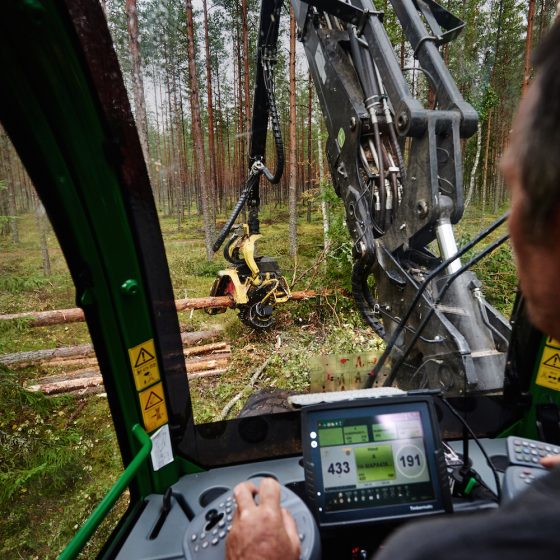Forestry and Timber Industry
The forestry and timber industry is divided into three subsectors:
- forestry (including forest arrangement and management)
- timber industry (including the furniture, wood chemicals, paper and pulp industry)
- wooden house construction
The forestry and timber industry employed nearly 31,500 workers in 2021, accounting for 4.5% of the total Estonian workforce. Employment in the forestry and timber industry is forecast to increase by approximately 4% by 2031. Employment growth is expected to be particularly high in the wooden house construction and wood chemistry sub-sectors.
The future of the forestry and timber industry will be influenced by technological advances and innovation. In forestry, digitalisation is a key trend for forest monitoring, management and certification, as well as for mapping forest resources and services, modelling forest ecosystems and making forestry-related decisions.
In the timber industry, the need for developmental activities will mainly increase in the fields of data processing, energy conservation, metering technologies and chemical wood refining. In the wooden house construction sector, factory production of houses is gaining momentum.
Take a look at the key findings here
About the study
The aim of the study was to determine
- how employment and skills demand in the main occupations will change by 2031, and
- what changes need to be made to training supply to better meet the changing demands of the labour market.
The study provides policymakers with a guide for steering the future.
Both quantitative and qualitative research methods were used to meet the aim of the study. Data sources include interviews with experts and alumni, statistics, previous research carried out in Estonia and abroad and strategic documents, development plans etc. in the sector.
Structure of the research report
- Description of the sector and its main occupations
- Overview of trends, causal factors and development plans affecting the sector’s labour and skills demands in the near future
- Overview of employment and enterprises in the sector
- Labour demand and employment forecast for the next 10 years
- Changing skills needs in the sector’s main occupations
- Relevant degree education, further training and retraining opportunities in the sector
- Comparison of labour demand and supply
- Conclusions and suggestions for meeting the forecast labour and skills demands
This is the second OSKA study on the need for labour and skills in the sector of forestry and timber industry. The first study was completed in 2016 (find key findings here).





